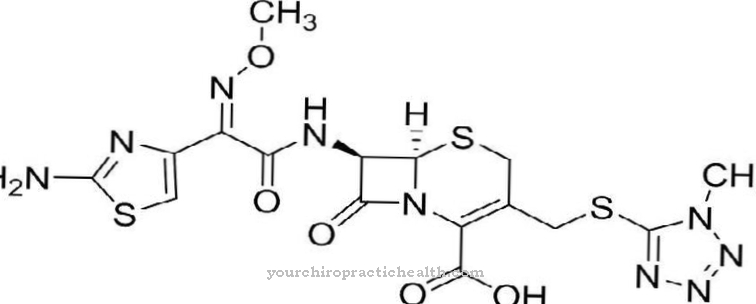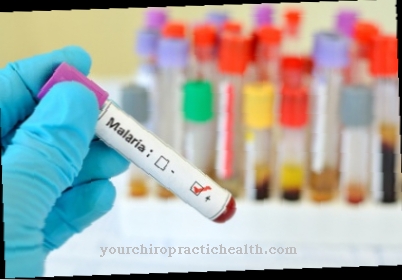Promethazine is a neuroleptic (actually an antihistamine) that has sedative, antiallergic, antiemetic and sleep-promoting effects. It is mainly used to treat agitation.
What is Promethazine?
Promethazine (chemical molecular formula: C17H20N2S) belongs to the group of phenothiazines. It is a neuroleptic, but actually belongs to the antihistamines due to its mechanism of action.
Promethazine has little or no use as an antipsychotic, which is unusual for a neuroleptic. However, it is used as a sedative (tranquilizer). In addition, it can be used as an antiallergic and anti-emetic.
Pharmacological effect
Promethazine belongs to the first group of neuroleptics. It is a low-potency neuroleptic. Neuroleptics are used, for example, in the therapy of schizophrenia, as they have an antipsychotic and stimulating effect. Psychoses are mainly due to the effects of the neurotransmitters dopamine and serotonin. Almost all neuroleptics therefore have an inhibitory effect on the dopamine and serotonin receptors in the central nervous system by occupying them and thus weakening the effect of the two neurotransmitters as antagonists. This is how they regulate their influence on the psyche.
However, promethazine has a different mechanism of action than most neuroleptics. First and foremost, it is an antihistamine and thus blocks the histamine by binding to the H1 receptors as an antagonist. There are also histamine receptors in the central nervous system. Since the promethazine also binds to these, it has a sleep-promoting and calming effect. It is therefore particularly suitable for treating states of excitement. However, it is not suitable for the sole therapy of schizophrenia.
The absorption of promethazine takes place in the intestine and takes place very quickly. However, it is subject to a high first-pass effect, which results in a relatively low bioavailability. The plasma half-life of the substance is about 10-12 hours, the highest plasma concentration is after one and a half to three hours.
The drug is metabolized by an enzyme from the cytochrome P450 group, the resulting metabolites are not pharmacologically active. So they have no effect of their own.
Medical application & use
Promethazine is used for agitation and anxiety, restlessness, sleep disorders and allergies. However, it is only used for allergies if simultaneous sedation is desired. In addition, the remedy is also used for nausea and vomiting, when better-tolerated antiemetics cannot be used.
Promethazine is not suitable for the sole treatment of schizophrenia. The neuroleptic potency of the drug is given as 0.5. It is therefore one of the low-potency neuroleptics that are mainly used because of their calming (sedative) effect. From this, the unsuitability for the sole therapy of schizophrenia can be derived.
For the treatment of allergic reactions, nausea and vomiting, promethazine is not the first choice because of its sedating effect. There are better tolerated drugs that do not have a sedative or sleep-promoting effect and yet are effective against allergic reactions, nausea and vomiting. However, if these substances are not available, cannot be administered for other reasons or if simultaneous sedation is desired, promethazine can be used for these complaints, against which it is very effective.
You can find your medication here
➔ Medicines to calm down and strengthen nervesRisks & side effects
Promethazine can cause a number of adverse drug effects.These include dry mouth, constipation, loss of libido, confusion, dizziness, hypotension (low blood pressure), cardiac arrhythmias, headaches, dyskinesia (movement disorders), akathisia (abnormal movement disorders), seizures, neuroleptic malignant syndrome and respiratory depression in young children and in patients with Bronchial asthma or COPD.
Promethazine must not be taken at the same time as blood pressure lowering drugs (antihypertensive drugs), sleeping pills, pain relievers and alcohol, as it increases the effects of these substances.
In children under two years of age, when taking MAO inhibitors, in Reye's syndrome, in epilepsy, impaired consciousness, hypotension, in coronary artery disease, liver dysfunction, kidney dysfunction, bronchial asthma, bronchitis, bronchiectasis, in cystic fibrosis, narrow-angle glaucoma and in prostate hyperplasia pyloro-duodenal constipation, promethazine must not be used.
In older people it may only be given under strict indications.
Promethazine is abused to enhance the central effect, e.g. the euphoric effects of opiates.













.jpg)

.jpg)
.jpg)











.jpg)